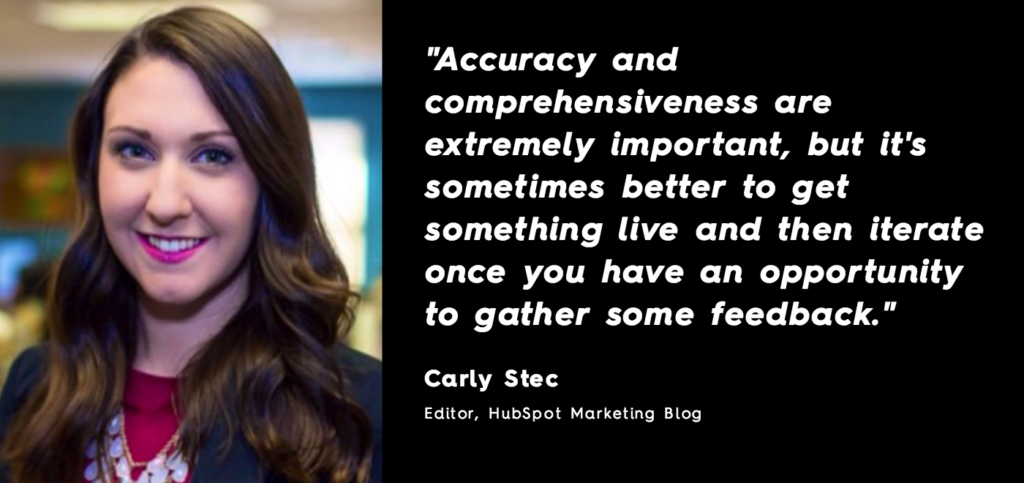June 20, 2017
Dates Announced for the 2018 SXSW Gaming Conference & Festival: March 15-17

SXSW Gaming 2018 will officially take place in downtown Austin, Texas from Thursday, March 15 – Saturday, March 17.
2017 marked a monumental year for SXSW as we introduced the SXSW Gaming Conference & Festival for the first time ever. With over 46,000 gamers enjoying this year’s Gaming Expo, Gaming Awards, and jam-packed schedule of panels, meet ups, parties, and special events, 2018 will be a huge next step for the fastest-growing gaming festival in central Texas.
Highlights from SXSW Gaming 2017 included the return of Nintendo to Austin, SMUG taking home the Fighters Underground crown with the greatest of ease, Naughty Dog taking home 7 awards (including Video Game of the Year) for masterpiece title Uncharted 4: A Thief’s End, and epic performances for both the Cosplay Contest and official closing party featuring Alan Walker.
Interested in becoming a part of the SXSW Gaming community? Take a look at some of the ways you can get involved with next year’s event!
How To Get Involved for SXSW Gaming 2018
SXSW PanelPicker | June 26 – July 21
The SXSW PanelPicker serves as an open platform for the public to enter speaking proposals on their creative ideas for each year’s event. Whether you’re an industry professional or die-hard gaming fan, we want to hear your ideas on trends that will lead to the major conversations of tomorrow!
SXSW Gaming Awards | Opens August 1
The SXSW Gaming Awards celebrates the excellence found in gaming each year. If you have a game, or are working on an up-and-coming project, then mark your calendars for the launch of SXSW Gaming Awards applications on August 1, 2017.
The SXSW Gaming Awards are meant for both professionals and indie developers alike. Explore the results of the 2017 SXSW Gaming Awards, and see what you can look forward to experiencing at next year’s event.
SXSW Gaming Competitions | Opens August 1
SXSW Gaming will introduce and host a variety of competitions for both industry professionals and fans in 2018. The first of these will be revealed later this year with applications opening up on August 1, 2017.
Interested in keeping up with SXSW Gaming? Follow us @SXSWGaming on Twitter, Instagram, and Facebook, as well as register for the official SXSW Gaming newsletter so that you never miss a beat.
Photo by Lauren Lindley
The post Dates Announced for the 2018 SXSW Gaming Conference & Festival: March 15-17 appeared first on SXSW.
Source: SxSW Film
June 20, 2017
Q&A: HOW HUBSPOT KEEPS ITS CONTENT MACHINE RUNNING
This article originally appeared on Column Five.
From ideating and writing to editing and managing, HubSpot Marketing Blog Editor Carly Stec knows a thing or two about the value of content—and what it takes to create it. In our latest Q&A, she shares her thoughts on the keys to great content, the trends she’s most excited about, the challenges of managing a major brand publication, and why sometimes you should just hit publish.

C5: Tell us a bit about your role. What do you do at HubSpot?
CS: I’ve been the Editor of HubSpot’s Marketing Blog for a little over a year now. Previously, I held a seat on this team as a writer—contributing to both our marketing and agency publications.
In the editor role, I oversee the editorial strategy and vision for the marketing section of the blog. This includes providing feedback to our contributors (both internal and external), generating post ideas to feed our pipeline, working across teams to organize campaigns, optimizing our content for both search and lead generation, and conducting experiments and analytical projects designed to improve
That said, I’ve recently stepped away from the day-to-day editing a bit to focus on some larger blog team projects: our blog redesign and our email subscription overhaul. These are two high-impact projects that I’m really excited to have a chance to work on. So … stay tuned! We’ve got some really interesting updates in store for our audience in those areas.
C5: What role does content play in your overall branding and marketing efforts?
CS: To say that content plays a meaningful role in HubSpot’s branding and marketing efforts would be an understatement. After all, it’s the sole reason why my team exists: We are, quite literally, the content team. And there are a lot of us. The bloggers. The multimedia content strategists. The podcast crew. The Medium folks. The Inbound.org team. We’re all creating original content for our respective audiences on a daily basis.
But content creation exceeds the limitations of just our team—it’s truly engrained in everything we do here at HubSpot. We use content to get found by our potential customers. We use content to help solve our existing customers’ problems. We use content to train our teams and partners. We use content to attract new talent. We’re sort of known for it.
And the best part? We’re always experimenting to find new ways to make content work for us and our audience. We’ve recently started testing out “posts as podcasts” as a way to introduce audio into our traditional, text-based blog posts. We’re messing around with video recaps there, too.
C5: What does your team look like?
CS: As I mentioned before, I work on a pretty large content team. But my particular role falls under the blogging subset of that team. On the blogging team, we have seven full-time employees that span across our two main blogs—Marketing and Sales—as well as our agency division.
I work under our Managing Editor, Emma Brudner, who oversees all of the publications. Each blog has a respective editor (that’s where I come in) who then works directly with the team of writers to plan and execute on the editorial calendar. It’s a great mix that’s worked out really well for us.
C5: How do you measure results?
CS: Our team looks after two main metrics: traffic and leads. Recently, we’ve shifted our focus to sit a little higher up at the top of the funnel, so traffic often takes priority when we’re mapping out our editorial efforts for any given month.
Aside from those two, there are a lot of little things we make note of—maybe something we write gets picked up by another publication or it takes off on a particular social channel. Those mini victories are important to acknowledge because the more in-tune you are with what works, the easier it becomes to replicate those successes.
C5: Which marketing trends are on the horizon within the next year?
CS: Ephemeral content, live streaming, and bots.
Personally, I’m looking forward to seeing ephemeral content take shape and find its place this year. Coming from someone whose job it is to fine-tune content before publishing, I’m really intrigued by the raw, unpolished nature of content that simply disappears. The other really interesting thing about ephemeral content is that it demands your attention. Think about it: if you blink, you might miss it. And in a world of eight-second attention spans, this concept presents a unique advantage for marketers that get it right.
C5: What have been the most valuable lessons you’ve learned about content creation/management over the last few years?
CS: 1) Know when to just ship it. People often spend far too long obsessing over all of the little details. Accuracy and comprehensiveness are extremely important, but it’s sometimes better to get something live and then iterate once you have an opportunity to gather some feedback.
2) Scale up gradually. You have to be realistic about what you want to produce and what you actually have the time to produce well. The quality/quantity debate is a tricky space to navigate, but I always lean in favor of quality. Remember: People want to come back to blogs that offer consistent content—in terms of volume and value—so don’t bite off more than you can chew.
3) You’re going to spell things wrong … and people are going to call you out on it. Life goes on 
C5: What are some of the biggest challenges in maintaining a big brand publication?
CS: I’m willing to bet that a lot of people would assume the biggest challenge I face is coming up with enough post ideas to support our editorial pipeline, but that’s not actually the case. Instead, it’s managing and organizing all of the ideas that we do have that’s proven to be really challenging.
The thing about running a big brand publication is that there are a lot of moving parts. We have ideas sourced from our team’s internal brainstorm, requests for campaign support from our larger marketing team, external guest contributions, etc. So finding a way to organize all of these ideas in a simple, streamlined way is a big undertaking—especially as our team scales. Right now, we’ve landed on Trello as the best place to house our backlog of ideas—as well as our publishing schedule for the next few weeks—but I think this is something we’ll have to iterate on as our strategy matures.
Another challenge? Building and documenting a process for everything we do. I was lucky enough to inherit a really exhaustive written style guide when I stepped into this role, and it’s made training new writers and maintaining a consistent voice across all of our content a lot easier.
But we’re constantly presented with new challenges that force us to stop, think, and make a decision that we all agree on as a team. For example, what are the guidelines around selecting stock imagery? How do we want to talk about product XYZ? How should we think about CTA alignment? These are all important considerations, and as our team grows, the need for documentation in these areas becomes more and more apparent.<
C5: How much content are you personally creating versus managing?
CS: Truth be told, it’s been a while since I’ve sat down to write a blog post. But what I’ve learned by taking a break from writing to explore editing and content management is that that muscle doesn’t go away. It takes a long time to “find your flow” as a writer, but once you do, everything sort of just clicks.
C5: What makes content great?
CS: I view great content through two lenses:
- Content that solves a problem.
- Content that is memorable.
Content that solves a problem might not come equipped with a super sexy title or a stunning visual element, but if it answers a question that someone has in a really clear and concise way, it’s a win. It’s great because it’s valuable.
Content that is memorable is an entirely different beast. Memorable content is the type of content you can’t wait to run and tell your friend, spouse, colleague, or mom about. It’s the type of content that makes you feel something—whether that be inspired, mad, sad, frustrated, motivated, validated … whatever.
The challenge here? You have to learn when and where each type makes the most sense. Strike that balance right and you’ll be in great shape.
C5: What type of feedback do you find yourself giving marketers/writers most frequently?
CS: “Learn how to anticipate the reader’s next question, and answer it before they can ask it.”
For us, this is the key to comprehensiveness and quality. If we want to write the best piece of content on the Internet about topic XYZ, we have to cover all the bases. I think a lot of the time it’s difficult for people that are writing for a professional audience to get out of their own head. They make assumptions based on what they already know about a topic but don’t stop to consider how the information might translate to someone who’s less informed. This is often referred to as the “curse of knowledge,” and it can be really tricky for people to overcome it.
C5: What are the most rewarding and frustrating parts of your job?
CS: Quite simply, I really enjoy helping people. I love helping our readers get better at their jobs. I love helping our team hit goals we didn’t think we stood a chance against. I love helping writers hone their strengths and shake their bad habits. To me, that’s the most rewarding part.
That said, the most frustrating part has been coming to terms with the idea that blogging isn’t an exact science. I’m very process-driven—I love to have a game plan so I can anticipate a certain set of outcomes. But that’s not the way blogging works. It’s actually really messy. Sometimes the post you pour your heart and soul into comes up short. And more often than not, the posts you don’t expect to take off, well, they do. The key here is to take note of what happens, what works, and what doesn’t work, and learn from i—even when things don’t go according to plan.
C5: Who are some writers that you really look up to and find yourself regularly inspired by?
CS: I really admire Ann Handley’s authenticity. I think her approach to writing is refreshing and a little quirky, but always clear. She was one of the first marketers I felt inspired by—and she remains one of my favorites to this day.
If you haven’t already read “Everybody Writes,” go pick up a copy.
C5: What one piece of advice would you give someone interested in getting into content marketing?
CS: Start writing a little something every single day. It’s much easier to ease into the habit than it is to force it all at once. Even if the world of content marketing is heading in a more video/audio direction, being able to articulate your thoughts or an idea well will always be important.
Many thanks to Carly for sharing her thoughts. Follow her posts on the HubSpot blog to keep up with her. For more wisdom from game-changers in content marketing and content strategy, check out these Q&As:
- Course Hero shows us how to build a brand through user-generated content.
- CoSchedule shares the content strategy that increased traffic six-fold.
- Jeff Marcoux of Microsoft chats about implementing an Account-Based Marketing strategy.
- Business Insider’s Mike Nudelman tells us what publishers want from your content.
- LinkedIn’s Alex Rynne explains how to use LinkedIn to build your personal and professional brand.
Source: Visual News
June 20, 2017
Clever Illustrations by Christoph Niemann
Clever Illustrations by Christoph Niemann
Back in 2010 we featured some clever artworks by Christoph Niemann in which he used Google Maps as his canvas. Today, we’re updating you on his latest work, which is pretty incredible and witty.
Christoph takes everyday elements, mundane things and make ’em part of super clever illustrations. His capacity of abstraction is such that he was featured in Netflix’s “Abstract – The Art of Design“. So, check out a selection of his latest pieces below and watch the documentary whenever you get the chance! Cheers. 😉
PauloGabriel
Jun 20, 2017
Source: Abduzeedo Illustration
June 19, 2017
Inside the Making of Preacher with Seth Rogen, Garth Ennis and Sam Catlin [Video]
“One year ago we showed the pilot here and in what was one of the most stressful days of my entire life. But it went well, thank God. And we’re back,” said SXSW Featured Speaker Seth Rogen.
In this SXSW 2017 session moderated by Terri Schwartz, Executive Producers Seth Rogen, Sam Catlin and Garth Ennis discuss the making of AMC’s supernatural drama Preacher, based on the popular comic book, including directing the series’ action-packed scenes and closely adapting the show from the comics in season two, which debuts Monday, June 25 at 10pm ET/9pm CT.
Rogen has emerged as a prominent figure in a new generation of multi-hyphenates, as an actor, writer, producer and director with the ability to generate copious material. Rogen has often said that he loves SXSW as it is the only festival that takes comedy seriously. He has had many other projects premiere at the SXSW Film Festival including Observe and Report (2009), Neighbors (2014), Sausage Party (2016), plus The Disaster Artist which was wildly popular at this year’s festival. We remain big fans of his work, comedic or dramatic, and look forward to sharing it with our audiences in the years to come.
As for Preacher’s other collaborators, Catlin had several producing roles and writing credits in AMC’s, Breaking Bad. Ennis is the creator of the comic book which Preacher is based on and has written several other popular comics that have been adapted for the big screen including Punisher and Ghost Rider.

Explore More Content From SXSW 2017
Get inspired by a multitude of diverse visionaries at SXSW – browse more 2017 Keynotes, Featured Sessions, Red Carpets, and Q&A’s on our YouTube Channel.
Follow us on Facebook, Twitter, Instagram, and SXSW News for the latest SXSW coverage, recaps, late-breaking announcements, and updates.
Photo courtesy of Joel Pena.
The post Inside the Making of Preacher with Seth Rogen, Garth Ennis and Sam Catlin [Video] appeared first on SXSW.
Source: SxSW Film
June 19, 2017
Website and App Design: Mileage Tracker
Website and App Design: Mileage Tracker
An app design that combines a user-friendly interface and at the same time giving a smooth experience sounds about right. If you know how this kind of apps are usually is boring with infinite dropdown scrolling on mobile. Meanwhile with this Mileage Tracker that can easily track your mileage and also providing an easy and minimal approach to simply put it on top. Last thing is the micro-interactions for the app for the “drives report” is kind of clean and intuitive with the swiping.
Dtail Studio is a studio that specializes in Product Design & Visual Identity based in Irvine, California. They also work in UI/UX design, Identity, Mobile Apps and Web Design for Startups and Businesses. Check out their profile on Behance.
Mileage Tracker Website & Application Design
Project Gallery
More Links
- Check out Dtail Studio’s site: dtailstudio.com
- Make sure to follow Dtail Studio on Behance
AoiroStudio
Jun 19, 2017
Source: Abduzeedo UI/UX
June 19, 2017
Illustration & Paper Lettering with People Too
Illustration & Paper Lettering with People Too
Let’s start the week with this illustration & paper lettering project by People Too. You heard me right, Paper Lettering. A mixture of drawing and a lot of crafting to create such a stunning result. Imagine that the mighty folks over People Too, went from making every single pieces from the buildings, people, furniture, plants, cars and more. This is one of those projects where you just appreciate their patience and their passion for the art itself. Props to the team!
People Too is a team of Alexey Lyapunov and Lena Erlich. They both work into the illustration, drawings and craft using the paper material. You should definitely check out their Behance.
Paper letters with little scenes inside for Hyundai Fleet
Project Gallery
More Links
- Check out People Too’s site: peopletoo.ru
- Make sure to follow People Too on Behance
AoiroStudio
Jun 19, 2017
Source: Abduzeedo Illustration
June 19, 2017
Which Companies Have The Highest Revenue Per Employee?
This article originally appeared on Priceonomics.
For many companies, the biggest cost is talent. This is especially true of Silicon Valley, where companies sell clicks and digital goods that do not have any material cost. So which companies’ workforces are able to generate the most revenue?
We decided to analyze every company in the Standard & Poor’s 500 Index to see which ones had the highest and lowest revenues per employee. The Standard & Poor’s 500 Index (S&P 500”) includes the 500 largest American companies listed on the NYSE or NASDAQ. In 2016, S&P 500 companies generated $11 trillion in combined revenue and employed more than 25 million people worldwide.
We found that Energy companies have the highest average Revenue per Employee, while Industrials and Consumer Discretionaries perform worst on this metric.
Technology companies performed at the lower end of the range on Revenue per Employee; part of the reason for this however, is other companies in spaces like Energy and Healthcare have large non-employee costs that Technology companies do not have.
***
The table below shows the top 50 companies by Revenue Per Employee in 2016 in S&P 500.

Data source: Craft
AmerisourceBergen, a pharmaceutical distributor, tops the list, generating more than $7.9M per employee in 2016. With a reported team of 19,000, which is less than half the workforce of Cardinal Health (37,300) and McKesson (68,000), the company compares favorably to its peers on revenue per employee. Cardinal Health and McKesson‘s RPE were $3.3M and $2.8M, respectively. Overall, Healthcare companies score well on revenue per employee, though they have other huge costs (the costs of administering drugs and health services).
Energy companies Valero Energy Corporation and Phillips 66 take positions 2 and 3, with $7.6M and $5.7M in Revenue per Employee. With the exception of tobacco manufacturers (Altria Group and Reynolds American) and insurance providers (Aflac and XL Group), the top ranks are dominated by Energy and Healthcare sectors. 23 of the top 50 are Energy companies and one-fifth are Healthcare organizations. Like Healthcare companies, Energy companies also have large non-employee costs, however (the costs of the natural resources, for example)
Grouping the companies into sectors in the chart below, we see the relative labour-intensity of different industries.

Data source: Craft
Average revenue per employee in the Energy sector is double that of Healthcare companies and almost four times as high as that of Information Technology companies.
The table below shows the lowest 10 companies in the index ranked by RPE.

Data source: Craft
It is perhaps unsurprising that Restaurant and Hotel chains make up the majority of the list. What is more striking is that IT providers Cognizant and Accenture have among the lowest revenue per employee in the Index. Amphenol Corporation, a manufacturer of interconnect products, recorded $101K Revenue per Employee, less productive than its competitor TE Connectivity, which generated $163K per Employee.
***
Next, we calculated the change in Revenue per Employee from 2014-16 to see if any trends emerged. The graph below shows S&P 500 companies with the highest and lowest growth rate in RPE.

Data source: Craft
Most of the RPE growth leaders made headcount reductions last year and thus saw their sales per headcount increase. The healthcare companies in this list with an exception for Vertex Pharmaceuticals experienced both revenue growth and headcount reduction, leading to sharp growth in RPE.
8 out of 10 companies with the lowest RPE growth experienced a drop in revenues in the period, while remaining Ball Corporation and Global Payments shrank in RPE mainly due to extensive recruiting.
***
We then looked specifically at Technology companies. Only Netflix (which is classed as Consumer Discretionary in the S&P500, not Technology), Apple and Facebook appeared among the top 50 companies by RPE, which required RPE of at least $1.3M.
The following table shows the top 20 Technology companies by revenue, ranked by RPE.

Data source: Craft
Apple has the highest revenue per employee in this selection of technology companies. However, they have substantial non-employee costs since selling hardware involves buying materials and making something tangible. Facebook and Alphabet (Google), on the other hand, make most of their revenue from selling a virtual good (advertising) and still have a tremendously high revenue per employee. VeriSign, which provides domain names and internet security, was a strong performer, generating $1.1Bn in revenue from only 990 employees, ranking fourth in the Technology sector, with $1.2M per employee.
***
Overall, Energy companies led the pack in Revenue per Employee, followed by Healthcare and Utilities. Technology companies showed themselves to be labour-intensive with RPE at the lower end of the range, and close to Consumer Discretionaries like restaurants and hotels. To see the full list of companies comprising S&P 500 Index, please click here.
Source: Visual News
June 18, 2017
‘On the Seventh Day’ Review: Jim McKay’s First Movie in a Decade is the Summer’s Surprise Crowdpleaser
The most satisfying aspect of “On the Seventh Day,” Jim McKay’s first feature in 12 years, stems from the way it combines a simple premise with profound concerns. Set across one week in the life of a Mexican immigrant in Brooklyn, it harkens back to classic neorealist traditions by providing a window into the everyday challenges of a lower-class existence all too often ignored in mainstream cinema. At the same time, it positions the drama as a feel-good crowdpleaser, a rousing sports movie about characters trapped by their surroundings and galvanized by their communal spirit.
It doesn’t take long to establish the plight of José (Fernando Cardona, a non-professional newcomer like the rest of the cast), who works a bland job as the deliveryman at a Mexican restaurant in Brooklyn’s Carroll Gardens when he’s not leading his soccer team to a championship in the nearby neighborhood of Sunset Park. A good portion of the movie takes place against the backdrop of the borough’s expansive streets and brick buildings, with José speeding around the city and engaging with the various locals who define his constrained environment. As with Sean Baker’s 2005 “Take Out,” which portrayed the struggles of a Chinese deliveryman, “On the Seventh Day” is as much focused on sketching out a self-contained universe as it is with the conundrum that emerges from it.
See More: IndieWire’s 2005 Interview With Jim McKay
But eventually that conundrum takes centerstage. José follows a reliable schedule, juggling life with his fellow immigrants from Puebla, Mexico — most of whom live together in a crowded apartment — with his fast-paced job, and dreaming of bringing his pregnant wife to the U.S. But José’s stern white boss complicates José’s stable routine by demanding he work on the same Sunday that his team’s scheduling to play in the finals. That’s a week away, and as recurring title cards count down to the encroaching deadline, José winds up caught between personal and professional allegiances, unsure where to begin. His boss shows no pity, his team could care less about employment issues, and José feels the tug on both sides: He doesn’t want to let his pals down, but sees his current gig as the ideal route to getting papers — and bringing his wife into the country in the process.
This setup could easily cascade into heavy-handed sentimentalism, but McKay’s too skilled a filmmaker to let that happen. While he’s spent the last decade and change directing television, he first launched his career with the minority-centric New York stories “Our Song” (which starred a young Keri Washington as a Crown Heights teen) and the HBO movie “Everyday People.” His measured approach to developing José’s story treasures understatement over bigger gestures, and even the suspenseful finale as José’s deadline arrives feels like an organic outgrowth of the moments leading up to it.
If “On the Seventh Day” overglamorized its characters or reduced them to archetypes of the struggling underclass, it might be more obvious that this movie is directed by a white guy. But that potential hurdle recedes to the background as McKay works within the confines of his setting, never creating the sense of an outsider looking in.
More than once, he pauses the story to allow for fly-on-the-wall observation: When José contends with obnoxious customers, or pauses in the midst of a busy day to grab a cheap meal, the small details inform the broader portrait of a fragile existence on the fringes of a crowded society. But there are plenty of warmer moments to offset the possibility of a pity party, from the lively evening scenes as the soccer players hang together at home to José’s tender video chat with his faraway wife. This scene marks the sole moment when McKay cuts away from the Brooklyn setting, briefly showing the woman at an internet café in a fleeting reminder of the larger world that exists beyond José’s reaches.
“On the Seventh Day” is filled with little hints to the broader disconnect that José and his fellow immigrants experience from their surroundings. Dropping off one order at a boutique office, he exchanges pleasantries with the Mexican receptionist in Spanish, only to find that she shifts to English the moment her employers pass by (it’s ostensibly a kind of code-switching). In private conversations, José and his peers blend traditional Spanish with the Mixtec dialect of their native Puebla, a reminder of the complex roots that inform their identity — and just how much it differs from the posh, vanilla land of gentrification in which they struggle to survive.
But they struggle together, and “On the Seventh Day” primarily works so well because it relegates the white characters — saviors and non-saviors alike — to supporting roles. José and his peers aren’t minorities because the movie allows them to dominate the frame. The narrative belongs to the way they process the highs and lows of working on the sidelines of an economy ignorant to their concerns. Rejected by an ambivalent job market, they build their own path. José’s allegiance to this defiant attitude runs headlong into his apparent desire to plant deeper roots, and the muted actor’s never better than when this conundrum registers on his subdued face.
If “On the Seventh Day” has any major setbacks, they stem from cheap production values and some shaky performances that distract from the sturdy narrative at hand. José’s story has some obvious qualities, but that’s part of its charm. A fantasy version of the studio system might greenlight this kind of energizing sports movie; instead, it’s microbudgeted and looks like it. In most cases, however, the rough edges contribute to its authenticity.
Once the movie arrives at its brilliant climax, the cumulative effects of passing details lead to sweeping payoff. As José must finally choose between competing interests, his team hopes for a happy ending. “José will save the day,” one of them asserts. Without spoiling anything, the welcome surprise of “On the Seventh Day” is that it wrestles with what a happy ending actually looks like in these circumstances — and finds a reasonable happy medium instead.
Its final moment is a form of masterful understatement, with the camera lingering on a solitary mariachi singer belting out a soulful tune on an city street, as if competing for attention with the rush of urbanity around him. As McKay cuts to black, it’s unclear whether the singer or the city has the upper hand.
Grade: A-
“On the Seventh Day” premieres as the centerpiece screening of the 2017 BAMcinemaFEST. It is currently seeking distribution.
Source: IndieWire film
June 18, 2017
As If ‘Tickled’ Weren’t Already Strange Enough, a New Conspiracy Theory Has Emerged In the Wake of Its Subject’s Death
We should have known that the bizarre story behind “Tickled” wouldn’t stop with either the film’s release or its subject’s death. Months after David D’Amato — the man behind the Competitive Endurance Tickling empire that David Farrier and Dylan Reeve delve into in their compelling documentary — died, some continue to wonder: Did he really?
READ MORE: ‘Tickled’ Directors React to David D’Amato’s Death: It ‘Has Hit Us Pretty Hard’
The two filmmakers put that conspiracy theory to rest in a new article for the Spinoff, writing unequivocally that “D’Amato has indeed died” and even going so far as to provide a copy of his death certificate. With that cleared up, however, they’re left to question how his company Jane O’Brien Media persists now that its founder has departed this mortal coil.
As with everything else related to this endlessly strange saga, the answer is as confusing as it is clarifying. Farrier and Reeve assert that a man named Louis Peluso has picked up where D’Amato left off, and though several aspects of the new Jane O’Brien have improved on what came before — the young men featured in what amount to fetish-porn videos are no longer being referred to by their full names, nor are they being harassed — Peluso hasn’t responded to the filmmakers’ inquiries with any more enthusiasm than his predecessor.
READ MORE: David D’Amato, the Villain of ‘Tickled,’ ‘Died Suddenly’ at Age 55
“We joked at the start of this whole thing that it was a bit like stepping into a tickling wormhole,” they write at the end of their piece, which deserves to be read in full. “What we failed to grasp at the time is that wormholes aren’t exactly short. In fact, they can go on for billions of light years.” Sounds like fodder for another documentary.
Stay on top of the latest breaking film and TV news! Sign up for our Email Newsletters here.
Source: IndieWire film
June 18, 2017
The Cult of Trash: How Do We Explain Our Taste for Really, Really Bad Movies?
You’re tearing us apart, Tommy!
The first time I ever saw the worst film ever made, I was with my brother and two of my cousins. We sat down in my living room in my old basement apartment, pulled up a pirated copy that was streaming on YouTube (because my efforts to buy it off of Amazon were unfruitful), and gazed in amazement while it played on a tiny sub-screen at 1.5x normal speed (typical format for pirated shit).
When the credits began to roll, we all just sat there, silent, awkward, and confused—confused by the absurdity of what we just consumed, but also confused by our genuine non-rejection of it, a non-rejection that quickly grew into full-blown love and then obsession. One of my cousins turned to me and asked, “What the f*** did we just watch?” I was like, “The Room.”
Source: NoFilmSchool






















